Do Raccoons Purr When Happy?
Raccoons do not purr in the same manner as cats due to anatomical differences. However, they exhibit a variety of vocalizations to express emotions, including soft chattering noises, trills, and purr-like sounds when content.
These vocalizations are often observed during social interactions, grooming, and feeding. Raccoon communication is complex and serves various functions, from distress signals to social bonding.
Understanding these behaviors from a scientific standpoint enhances our knowledge of raccoon emotional expressions and social structures. Explore further to uncover how these sounds and behaviors play an essential role in raccoon life and interactions.
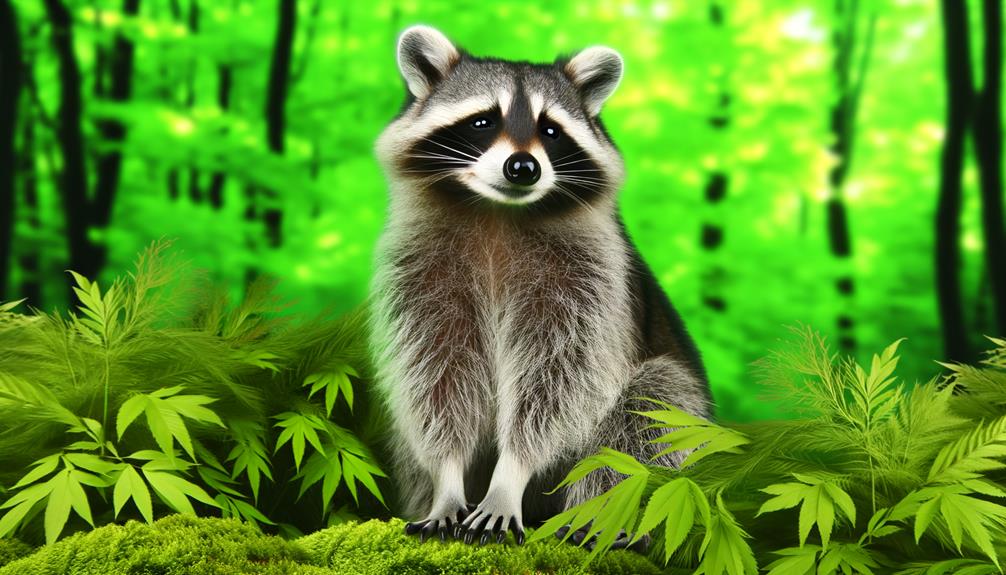
Key Takeaways
- Raccoons do not possess the anatomical structures necessary for true purring.
- Raccoons make soft, contented noises that can be mistaken for purring when happy.
- Happy raccoon vocalizations include soft chattering, trills, and purr-like sounds.
- Scientific studies confirm raccoon vocalizations reflect various emotional states without true purring.
- Raccoon vocalizations are contextually diverse and essential for their communication.
Raccoon Vocalizations
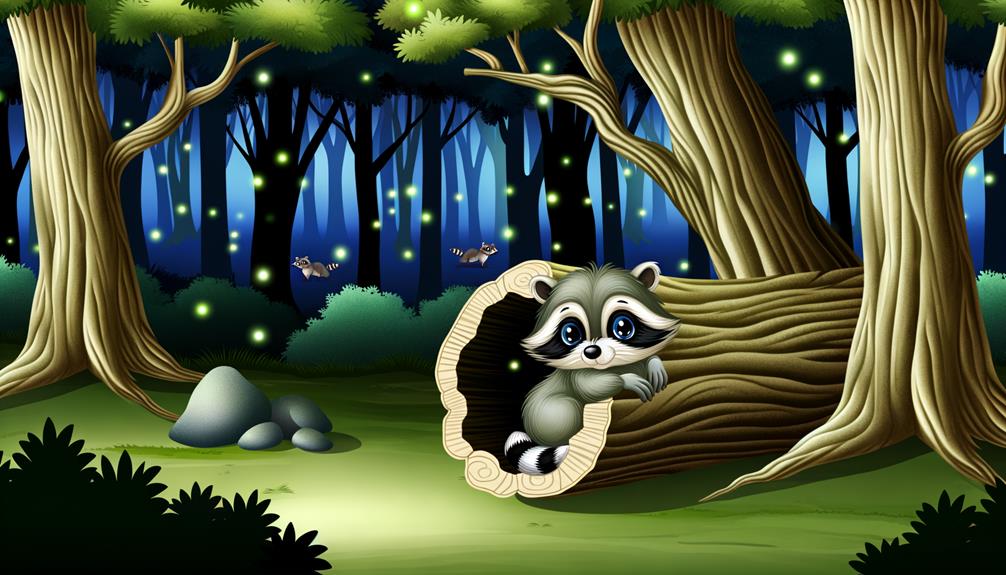
Raccoon vocalizations encompass a wide range of sounds, each serving distinct communicative functions related to their social interactions and environmental responses. These vocalizations include purrs, growls, hisses, whimpers, and screams, each corresponding to specific contexts such as mating, territorial disputes, or distress signals.
Purring, for instance, is often observed during moments of contentment or when raccoons are interacting with their offspring. Growls and hisses are typically associated with defensive behaviors or aggression towards perceived threats. Whimpers may indicate submission or a call for attention, while screams can be a vital signal in the face of danger.
Each vocalization plays an essential role in their survival and social organization, allowing raccoons to navigate complex ecological landscapes effectively.
Understanding Raccoon Behavior
A thorough understanding of raccoon behavior necessitates an examination of their social structures, foraging patterns, and adaptive strategies in diverse habitats. Raccoons (Procyon lotor) are primarily solitary but exhibit flexible social behaviors, particularly during mating and rearing offspring.
Their foraging patterns are opportunistic; they are omnivorous and exhibit a highly developed sense of touch, often manipulating objects to locate food. Adaptability is a hallmark of raccoon behavior, allowing them to thrive in both urban and rural environments.
They exhibit nocturnal habits and demonstrate problem-solving abilities, which facilitate their survival in varied ecosystems. Understanding these behaviors provides insight into their ecological role and interactions with other species, including humans.
Happy Raccoon Sounds
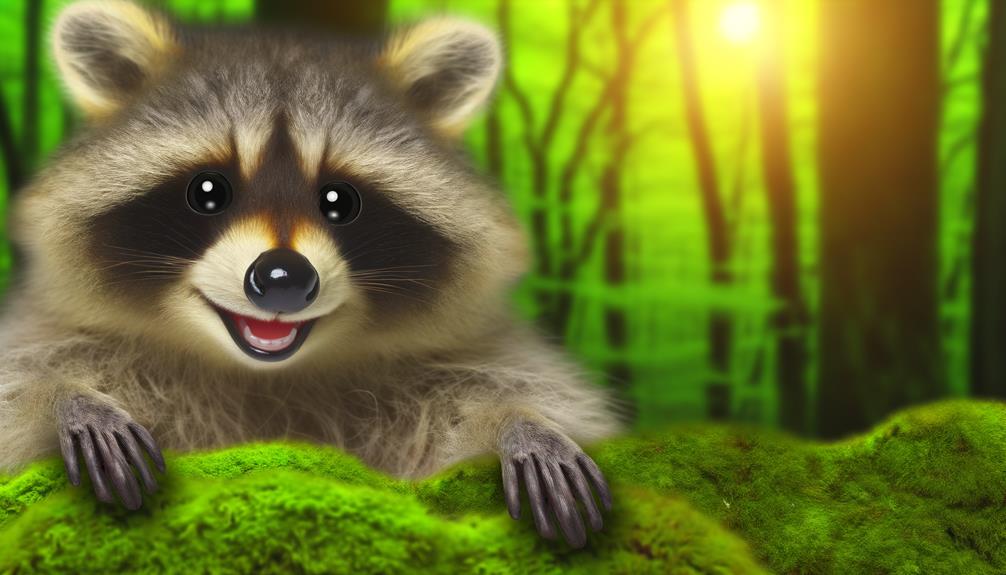
While understanding raccoon behavior provides a broad perspective on their adaptability and interactions, examining the specific vocalizations they produce when content offers deeper insights into their emotional expressions.
Raccoons exhibit a range of sounds indicative of their emotional states. When happy, they often produce a series of soft, chattering noises, trills, and purr-like sounds. These vocalizations are typically softer and more rhythmic compared to their distress calls. The chattering is usually interspersed with gentle cooing sounds, indicative of a relaxed state.
Observations in both captive and wild settings have documented these sounds during social interactions, grooming, and feeding. This auditory repertoire underscores the complexity of raccoon communication and the nuanced manner in which they convey contentment.
Comparing to Cat Purrs
When comparing raccoon vocalizations to cat purrs, it is essential to note the differences in their acoustic properties and physiological mechanisms.
While both species produce sounds that may indicate contentment, the frequency and modulation of these vocalizations differ notably.
Despite these differences, both raccoon and cat sounds serve as emotional indicators, primarily associated with states of relaxation and happiness.
Differences in Vocalization
Raccoons exhibit a distinct form of vocalization that differs noticeably from the purring sounds produced by domestic cats. While cats generate a continuous, rhythmic purring through the rapid cycling contraction and relaxation of their laryngeal muscles, raccoons employ a broader range of vocal expressions.
These include chirps, growls, and chatters, each serving different communicative functions. Unlike the low-frequency cat purr, raccoon vocalizations tend to be more variable in pitch and duration. The chirping often resembles bird sounds and is typically used by young raccoons to communicate with their mothers.
Adult raccoons use growling and chattering as means of expressing agitation or signaling to conspecifics. Consequently, raccoon vocalizations are more contextually diverse compared to the relatively uniform purr of cats.
Emotional Indicators Similarities
Both raccoons and cats exhibit specific vocalizations that serve as emotional indicators, suggesting a parallel in how these animals communicate their affective states.
Cats are well-known for their purring, a sound often associated with contentment and comfort. Similarly, raccoons produce a variety of vocalizations such as purring, chittering, and trilling when they are content or interacting socially. These sounds are produced through the vibration of the vocal cords, indicating a relaxed and positive emotional state.
The similarity in these vocalizations underscores the possibility that both species utilize specific sounds to convey happiness and social bonding, providing insight into their complex emotional lives. Further research could elucidate additional parallels in the emotional communication strategies of these animals.
Emotional Expressions
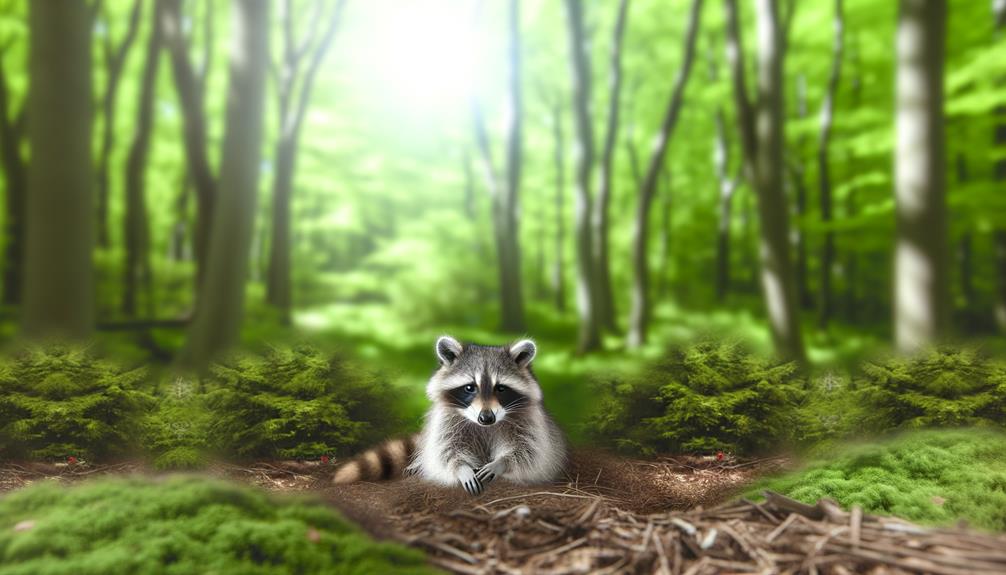
Understanding the emotional expressions of raccoons requires a detailed examination of their various vocalizations and body language. Raccoons exhibit a range of sounds, including purring, growling, and chittering, each linked to different emotional states. Purring, often associated with contentment, is produced by rhythmic vibrations of the laryngeal muscles.
Additionally, body language such as ear positioning, tail movement, and facial expressions offer further insight into their emotional state. A relaxed posture and slow tail movements often indicate a calm and happy raccoon, while aggressive or fearful raccoons may exhibit more tense, rigid movements.
Thorough studies of these behaviors enhance our understanding of raccoon emotions, contributing to better welfare practices and human-wildlife interactions.
Social Interactions
In addition to their emotional expressions, the social interactions of raccoons provide valuable insights into their complex behaviors and communication strategies. Raccoons are generally solitary but display social behaviors during mating seasons and while rearing offspring. They communicate through a variety of vocalizations, body postures, and facial expressions.
Vocalizations such as chattering, growling, and purring may indicate different emotional states or intentions. Raccoons exhibit specific grooming behaviors that strengthen social bonds, particularly between mothers and their young. Understanding these interactions helps elucidate their social structures and adaptive strategies in the wild.
Observing these behaviors in different contexts, such as urban versus rural environments, can also reveal how raccoons adapt their social interactions to varying ecological pressures.
Scientific Observations
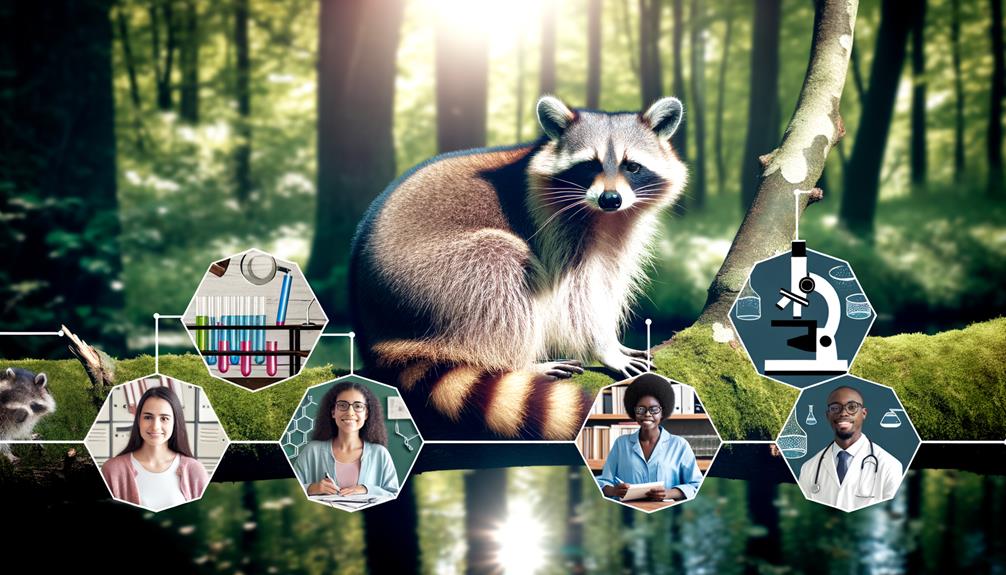
How do scientific observations contribute to our understanding of raccoon behavior, particularly their vocalizations such as purring, and what methodologies are employed to study these phenomena in both controlled and natural environments?
Researchers employ a variety of techniques to investigate raccoon vocalizations, ensuring a thorough understanding. These methodologies include:
- Field Observations: Monitoring raccoons in their natural habitats to record spontaneous vocalizations and behaviors.
- Laboratory Studies: Conducting controlled experiments to elicit and analyze specific vocalizations under various stimuli.
- Acoustic Analysis: Utilizing advanced audio equipment to capture and dissect the frequency, duration, and context of vocal sounds.
- Behavioral Correlation: Evaluating the relationship between vocalizations and observable behaviors, such as social interactions or stress responses.
These scientific observations enable a detailed understanding of raccoon communication patterns.
Myths and Facts
Dispelling common misconceptions about raccoon vocalizations is important. It is crucial to distinguish between anecdotal reports and scientifically verified facts. Many believe that raccoons purr when happy, similar to cats. However, scientific studies indicate that raccoons do not possess the anatomical structures necessary to produce a true purring sound.
Instead, raccoons use a variety of vocalizations, such as growls, chirps, and whistles, to communicate different emotional states. The misconception may stem from the soft, contented noises raccoons sometimes make, which can be mistaken for purring. It is essential to rely on empirical evidence when evaluating animal behavior to avoid perpetuating myths.
Understanding the true nature of raccoon vocalizations enriches our knowledge of these complex creatures.
Conclusion
Coincidentally, the intriguing vocalizations of raccoons reveal much about their emotional states and social interactions, much like the purring of domestic cats.
While raccoons do not purr in the same manner as felines, their repertoire of sounds, including chittering and purring-like noises, serves a similar purpose in expressing contentment and facilitating bonding.
Scientific observations underscore the complexity of raccoon communication, dispelling myths and enriching understanding of their behavioral ecology.
This nuanced vocal behavior underlines the sophisticated emotional expressions within the species.






